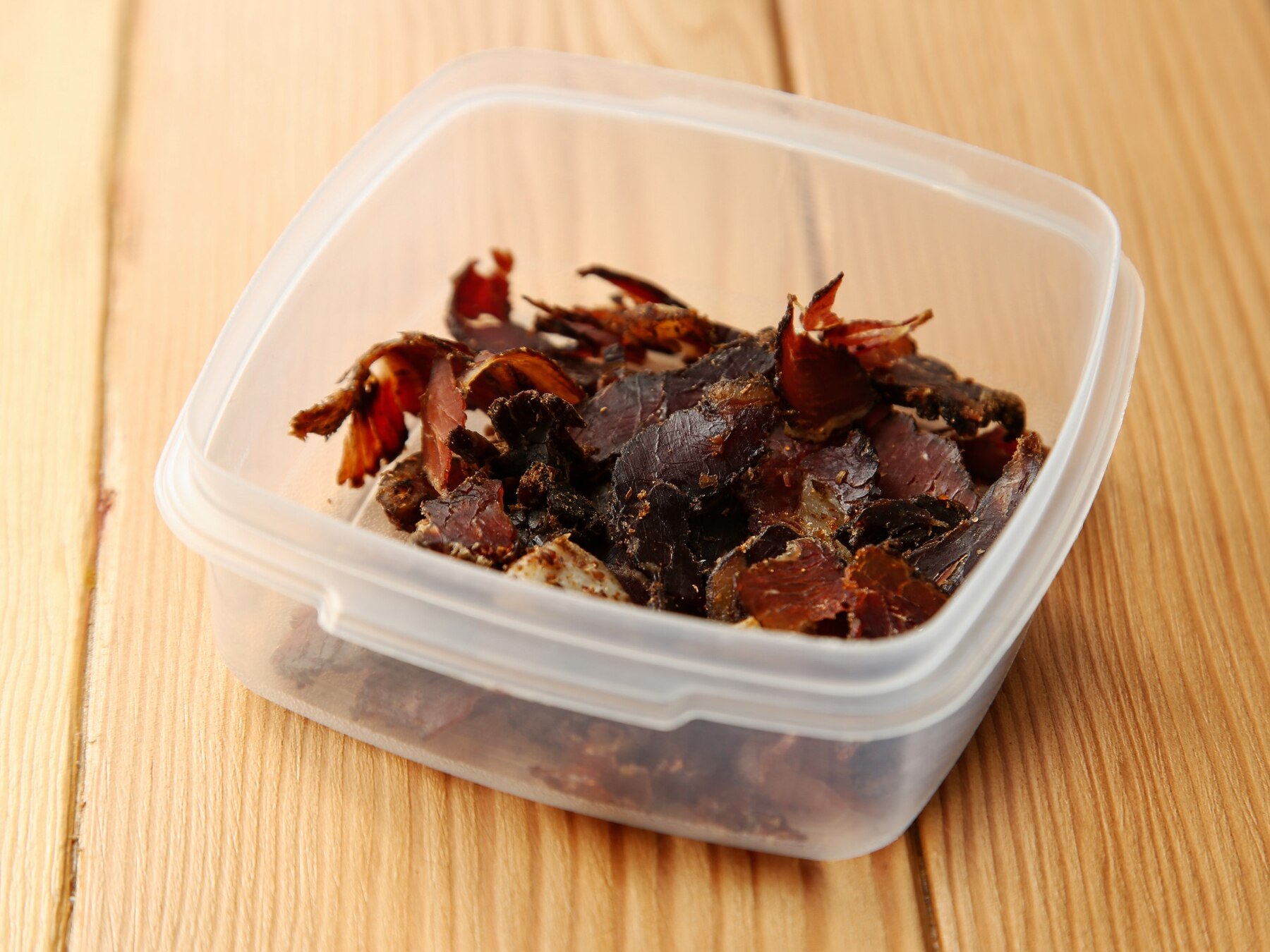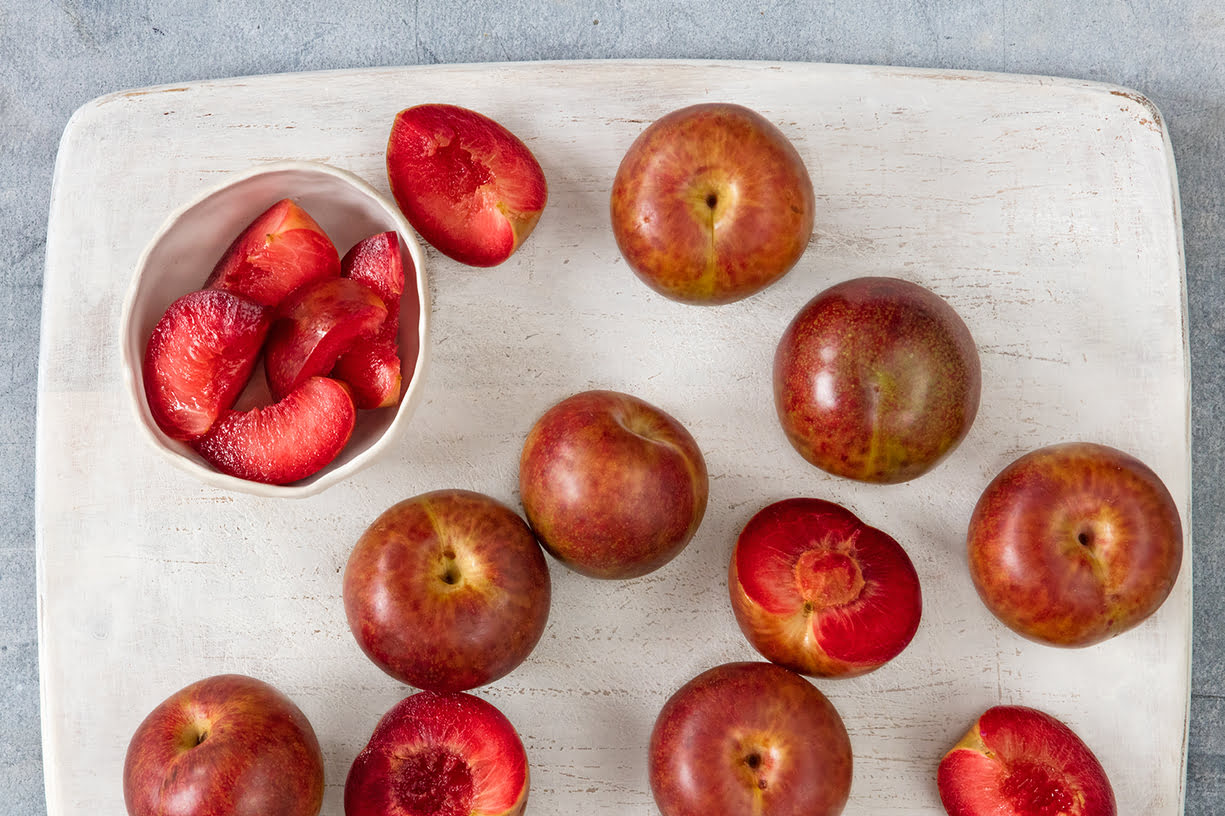

Articles
How To Store Nectarines
Modified: December 7, 2023
Learn the best methods and tips for storing nectarines in our informative articles. Keep your nectarines fresh and delicious with these expert recommendations.
(Many of the links in this article redirect to a specific reviewed product. Your purchase of these products through affiliate links helps to generate commission for Storables.com, at no extra cost. Learn more)
Introduction
Welcome to the world of nectarines, those juicy and delicious stone fruits that are a summertime favorite. Whether you recently purchased a batch of ripe nectarines or harvested them from your own backyard orchard, knowing how to store them properly can ensure that you enjoy their delightful flavor and texture for as long as possible. In this article, we will explore the different methods of storing nectarines, from whole fruits to cut pieces, to freezing and preserving them through canning. So, let’s dive in and learn how to make those luscious nectarines last!
Key Takeaways:
- Choose ripe, vibrant, and heavy nectarines for optimal flavor. Store whole nectarines at room temperature or refrigerate for longer shelf life, away from ethylene-producing fruits. Enjoy their delightful taste year-round!
- Store cut nectarines in airtight containers with lemon juice to prevent browning. Freeze nectarines for longer storage and can them for extended shelf life. Savor the taste of summer anytime!
Read more: How To Grow Nectarine From Seed
Choosing Ripe Nectarines
When it comes to storing nectarines, the first step is to select ripe ones that are at the peak of their flavor and juiciness. Here are some tips for choosing the best nectarines:
- Color: Look for nectarines with vibrant, uniform color. Ideally, they should have a deep orange or yellow hue, indicating that they are fully ripened.
- Firmness: Gently squeeze the fruit to check its firmness. A ripe nectarine should give slightly when pressed, but it should not feel mushy or overly soft.
- Aroma: Give the nectarine a sniff near the stem end. A sweet and fragrant aroma is a good indicator of ripeness.
- Weight: A ripe nectarine will feel relatively heavy in your hand compared to an underripe one. This signifies that it is juicy and packed with flavor.
Remember that nectarines continue to ripen after they are harvested. If you can’t find fully ripe nectarines at the store, you can opt for ones that are slightly underripe and allow them to ripen at home. Place them in a paper bag and keep them at room temperature for a few days until they reach the desired ripeness. Avoid storing unripe nectarines in the refrigerator, as this can inhibit the ripening process and negatively affect the flavor and texture.
Storing Whole Nectarines
If you have a surplus of whole nectarines and want to extend their shelf life, follow these steps to store them properly:
- Inspect the nectarines: Before storing, carefully examine each nectarine for any signs of bruising, mold, or damage. Remove any damaged fruits from the batch as they can quickly spoil the others.
- Choose an appropriate storage location: For short-term storage (2-3 days), you can keep nectarines at room temperature in a cool, well-ventilated area away from direct sunlight. However, for longer storage, it’s best to refrigerate them.
- Refrigerate the nectarines: Place the nectarines in a breathable bag or place them unwashed in the fruit compartment of your refrigerator. The cooler temperature will slow down the ripening process and help to prolong their freshness. It is important to note that refrigeration can slightly alter the texture of the fruit, making it slightly firmer. If you prefer softer nectarines, allow them to come to room temperature before consuming.
- Keep them separate from ethylene-producing fruits: Nectarines are sensitive to ethylene gas, which accelerates the ripening process. To prevent overripening, store nectarines away from ethylene-producing fruits, such as apples, bananas, and tomatoes.
- Handle with care: When taking nectarines out of the refrigerator, handle them gently to avoid bruising. Let them sit at room temperature for a little while to enhance their flavor before enjoying.
By following these steps, you can enjoy fresh and flavorful nectarines for an extended period of time.
Storing Cut Nectarines
If you’ve sliced or diced your nectarines and have some leftover pieces, you can still store them properly to prevent spoilage and maintain their freshness. Here’s how to store cut nectarines:
- Prepare the nectarines: Wash the nectarines thoroughly and remove any bruised or damaged areas. Slice or dice them as desired, discarding the pits.
- Choose the right container: Place the cut nectarines in an airtight container or a resealable plastic bag. Make sure the container is clean and dry to prevent any moisture from building up.
- Add a protective layer: To prevent browning, which occurs due to exposure to air, sprinkle some lemon juice or a mixture of lemon juice and water over the cut nectarines. Alternatively, you can also use ascorbic acid or vitamin C powder to keep the fruit fresh and prevent oxidation.
- Seal and refrigerate: Seal the container tightly to keep out any air and moisture. Store the cut nectarines in the refrigerator for up to three days. Check them periodically for any signs of spoilage and discard any pieces that have gone bad.
It’s important to note that cut nectarines will start to lose their firmness and juiciness over time, so it’s best to use them within a couple of days for the best taste and texture. If you’re not able to consume them within that time frame, you can freeze the cut nectarines for longer storage.
By following these simple steps, you can make the most out of your cut nectarines and enjoy their refreshing flavor even after they have been sliced or diced.
Store nectarines at room temperature until ripe, then refrigerate in a plastic bag for up to 5 days. Keep them away from ethylene-producing fruits to prevent overripening.
Freezing Nectarines
If you have an abundance of nectarines that you want to preserve for longer periods, freezing them is a great option. Freezing allows you to enjoy the taste of ripe nectarines even when they are out of season. Here’s how you can freeze nectarines:
- Preparation: Wash the nectarines thoroughly and remove any blemishes or bruises. Cut the nectarines in half and remove the pit. You can also slice or dice them according to your preference.
- Blanching (optional): Blanching the nectarines before freezing can help preserve their color and texture. Fill a pot with boiling water and prepare a bowl of ice water. Submerge the nectarines in the boiling water for 30 to 60 seconds, then transfer them to the ice water bath to cool rapidly. Pat them dry before proceeding.
- Packaging: Place the prepared nectarines in a single layer on a baking sheet lined with parchment paper or a silicone mat. Make sure the pieces are not touching each other. This will prevent them from sticking together during freezing.
- Flash freezing: Place the baking sheet with the nectarines in the freezer and let them freeze for about 1-2 hours or until they are firm. Flash freezing helps to maintain the individual pieces’ structure and prevents them from turning into a solid clump.
- Transfer to freezer bags: Once the nectarines are firm, remove the baking sheet from the freezer. Transfer the frozen nectarines into freezer-safe bags or airtight containers. Label the bags with the date for easy reference.
- Final freezing: Place the bags or containers back in the freezer and arrange them in a way that maximizes space efficiency. Make sure to remove as much air as possible from the bags to prevent freezer burn.
Frozen nectarines can be stored in the freezer for up to six months. To use them, simply remove the desired amount from the freezer and thaw them in the refrigerator or at room temperature. They can be used in smoothies, baked goods, jams, or as a topping for yogurts and desserts.
Freezing nectarines is an excellent way to enjoy their succulent flavor and juicy texture throughout the year. Remember to properly package and label them to ensure their quality and easy retrieval from the freezer.
Read more: How To Start A Nectarine Tree From Seed
Preserving Nectarines (Canning)
If you’re looking for a way to preserve nectarines that extends their shelf life even further, canning is an excellent option. Canned nectarines can be enjoyed months after the harvest season, allowing you to savor the taste of summer all year round. Here’s a step-by-step guide on how to can nectarines:
- Prepare the nectarines: Start by washing the nectarines thoroughly to remove any dirt or impurities. Peel off the skin using a sharp knife or blanch them in boiling water for a few seconds and then transfer them to an ice bath to make peeling easier.
- Pit and slice the nectarines: Cut the nectarines in half and remove the pits. You can slice them into quarters or smaller pieces depending on your preference.
- Prepare the syrup: In a large saucepan, combine water and sugar to create a syrup. The ratio of water to sugar can vary depending on your desired sweetness. Bring the syrup to a boil and let it simmer for a few minutes to dissolve the sugar completely.
- Pack the nectarines: Gently place the sliced nectarines into sterilized canning jars, leaving about ½ inch of headspace at the top. Pour the hot syrup over the nectarines, ensuring that they are completely submerged in the liquid.
- Remove air bubbles: Use a clean utensil, such as a chopstick or a plastic spatula, to remove any air bubbles trapped in the jars. This step is important to prevent spoilage.
- Seal the jars: Wipe the rim of each jar with a clean, damp cloth to ensure a proper seal. Place the lids on top of the jars and screw on the bands until they are fingertip tight.
- Process the jars: Use a water bath canner or a large stockpot to process the jars. Lower the jars into the boiling water and make sure they are fully submerged. Process the jars for the recommended time based on your altitude and the jar size.
- Cool and store: After the processing time is complete, carefully remove the jars from the canner and place them on a towel or cooling rack. Allow them to cool completely. Check the seals of the jars to ensure they have properly sealed. Store the canned nectarines in a cool, dark place for up to a year.
Canned nectarines can be enjoyed on their own, added to fruit salads, used in pies and cobblers, or even blended into smoothies. The canning process allows you to preserve the natural sweetness and flavor of nectarines, providing you with a taste of summer whenever you desire.
Remember to always follow proper canning techniques and guidelines for safe preservation. It’s essential to use sterilized jars and lids to prevent any bacterial growth that may cause spoilage.
Conclusion
Storing nectarines properly is essential to preserve their flavor, texture, and freshness. Whether you have whole nectarines, cut pieces, or an abundance of harvest, following the right methods can help you enjoy their delightful taste for an extended period. From choosing ripe nectarines to freezing and canning, here are the key takeaways:
– When selecting nectarines, look for vibrant color, slight firmness, sweet aroma, and relative heaviness.
– Store whole nectarines at room temperature for a few days or refrigerate them for longer shelf life, away from ethylene-producing fruits.
– Cut nectarines can be stored in an airtight container with added lemon juice or ascorbic acid to prevent browning.
– Freezing nectarines involves preparing, blanching (optional), flash freezing, and storing in airtight containers.
– Canning nectarines requires peeling, slicing, preparing syrup, packing in jars, removing air bubbles, sealing, processing, and cooling.
By following these methods, you can savor the taste of nectarines throughout the year, even when they are out of season. Whether you’re enjoying them fresh, frozen, or preserved, nectarines offer a burst of summer flavor and a myriad of culinary possibilities.
Remember to use ripe nectarines and handle them with care to ensure the best quality. Take advantage of your knowledge of proper storage techniques to make the most of your nectarines and create delicious recipes. So go ahead and explore the wonderful world of nectarines, knowing that you can enjoy their juicy goodness for a long time to come!
Frequently Asked Questions about How To Store Nectarines
Was this page helpful?
At Storables.com, we guarantee accurate and reliable information. Our content, validated by Expert Board Contributors, is crafted following stringent Editorial Policies. We're committed to providing you with well-researched, expert-backed insights for all your informational needs.















0 thoughts on “How To Store Nectarines”